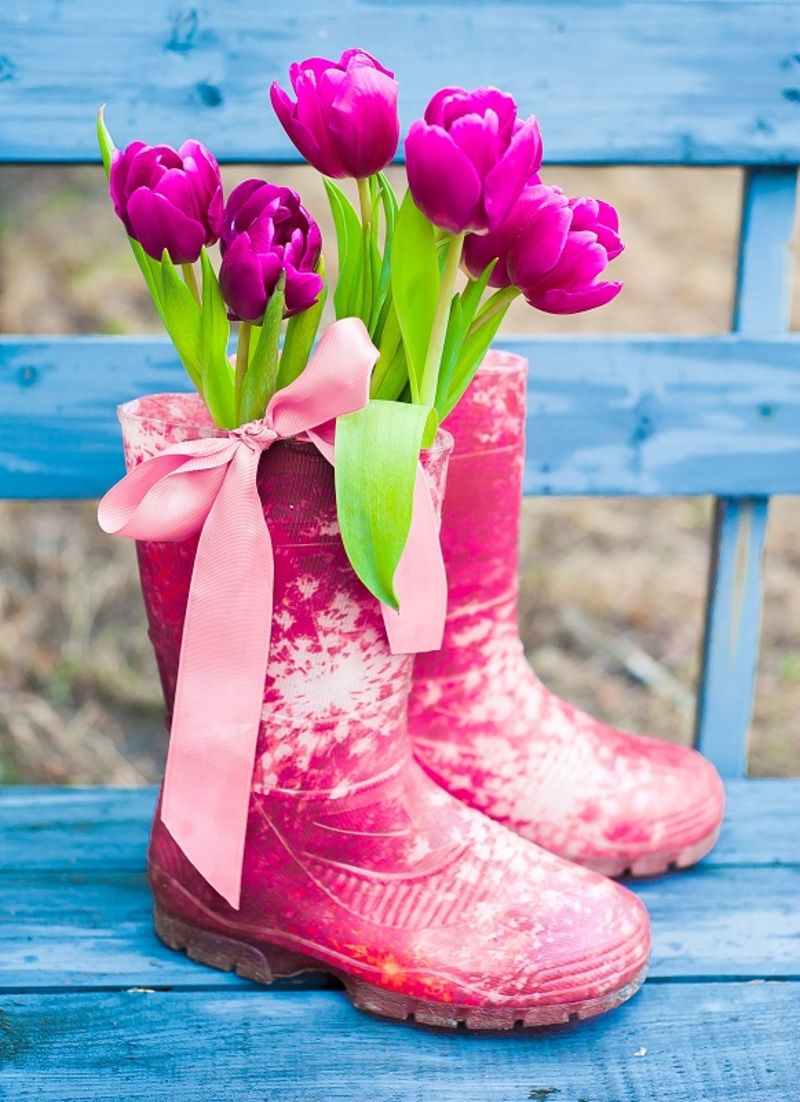Top Secrets to Growing Beautiful Hydrangeas
Posted on 26/08/2025
Top Secrets to Growing Beautiful Hydrangeas
Hydrangeas--with their lush foliage and spectacular blooms--are the crown jewels of many gardens. Whether you're a seasoned gardener or just falling in love with these stunning florals, unlocking the top secrets to growing beautiful hydrangeas will ensure your plants dazzle year after year. In this comprehensive guide, we'll cover everything you need to know: from varieties and site selection, to pruning, fertilizing, and troubleshooting common problems. Read on to become a true hydrangea expert!
Understanding Hydrangea Varieties
Before you get your hands dirty, it's essential to recognize the types of hydrangeas you might grow. Each variety boasts unique features, care requirements, and offers different options when it comes to color, size, and bloom shape.
The Main Types of Hydrangeas
- Bigleaf Hydrangea (Hydrangea macrophylla) -- Known for their mophead and lacecap flowers, these are the classic blue or pink hydrangeas often seen in gardens.
- Panicled Hydrangea (Hydrangea paniculata) -- Renowned for conical flower heads and white-to-pink blooms that age beautifully through the season.
- Smooth Hydrangea (Hydrangea arborescens) -- These are native to North America and valued for their huge, round, white flowers, famously featured in 'Annabelle' cultivars.
- Oakleaf Hydrangea (Hydrangea quercifolia) -- Notable for unique foliage shaped like oak leaves and stunning autumn colors.
- Climbing Hydrangea (Hydrangea anomala petiolaris) -- Exceptional for vertical landscapes, producing creamy, lacy blooms on woody vines.
Pro Tip: Choose varieties based on your climate, garden space, and desired bloom style for optimal success.

Top Secrets to Growing Beautiful Hydrangea Blooms
Now that you know your options, it's time to explore the proven secrets for growing amazing hydrangeas--from the roots up!
1. Picking the Best Location
- Sunlight: Most hydrangeas thrive in morning sun and afternoon shade, although panicle types can handle full sun in cooler climates. Avoid hot, baking sun, which can scorch leaves and wilt flowers.
- Soil: Well-draining, moist, and fertile soil is essential. If you have sandy or heavy clay soil, amend it with compost or organic matter before planting.
- Spacing: Proper air circulation is vital to prevent fungal diseases. Space hydrangeas according to mature size--typically 3-10 feet apart, depending on type.
2. Planting Hydrangeas Properly
- Plant in spring or fall for best root establishment.
- Dig a hole twice as wide and as deep as the root ball.
- Set the plant at the same depth it was growing in the pot.
- Backfill with enriched soil, water deeply, and mulch to conserve moisture.
3. Watering Wisely
Careful watering can make or break your hydrangeas. These plants need consistently moist soil (not soggy!), especially during hot weather and early establishment.
- Water deeply 1-2 times per week--more often during heatwaves.
- Mulch with 2-3 inches of organic material to retain moisture and regulate soil temperature.
- Morning watering is best to prevent fungal buildup and leaf scorch.
4. Feeding for Fabulous Flowers
Hydrangeas are fairly heavy feeders. The secret to spectacular blooms is well-timed fertilization:
- Use a balanced, slow-release fertilizer in early spring when new growth appears.
- Feed again in late spring if plants look pale or growth is slow (do not fertilize after July in cold climates).
- Avoid high nitrogen fertilizers--they promote leafy growth at the expense of blooms.
The Secret Art of Pruning Hydrangeas
Pruning hydrangeas can puzzle many gardeners, so knowing the bloom habit of your variety is key. Improper pruning is one of the most common reasons for poor flowering.
When and How to Prune Different Hydrangea Types
- Bigleaf & Oakleaf Hydrangeas: Bloom on old wood (stems produced the previous year). Prune immediately after flowering in early to mid-summer. Remove dead wood and old flower heads; avoid heavy cutbacks in late fall or spring.
- Panicle & Smooth Hydrangeas: Bloom on new wood (current season's growth). Prune in late winter or very early spring. Cut back to 1/3rd or even to the ground for smooth hydrangeas to encourage showy blooms.
- Climbing Hydrangea: Requires little pruning, just remove dead or wayward shoots in late winter or after flowering.
Key secret: Never prune all types at once, and always research the specific needs of your hydrangea species!
Soil pH and Changing Hydrangea Flower Color
If you adore the classic blue or pink hues, you'll love this hydrangea gardening trick--changing flower color by adjusting soil pH. This only works with bigleaf hydrangeas (mophead/lacecap varieties).
Steps to Alter Hydrangea Color:
- To Make Flowers Blue: Lower the soil pH below 6.0 by adding aluminum sulfate or elemental sulfur. This increases available aluminum, turning blooms blue.
- To Make Flowers Pink: Raise pH to 6.5 or higher by adding garden lime (dolomitic limestone). Less aluminum uptake results in pink blooms.
Note: White cultivars usually remain white regardless of soil pH.
Caution: Adjust slowly, and always test soil pH before amending.
Common Hydrangea Problems & Easy Solutions
Even with great care, hydrangeas can face some issues. Here are quick fixes to keep your hydrangeas healthy and beautiful:
1. Wilting Leaves or Blooms
- Cause: Underwatering, transplant shock, or hot sun.
- Solution: Deep, regular watering (avoid letting the plant dry out completely), and provide shade during hottest parts of day.
2. Brown Leaf Edges (Leaf Scorch)
- Cause: Intense sunlight, drought, or wind exposure.
- Solution: Mulch well, water regularly, and if possible, transplant to a more sheltered location.
3. No Flowers
- Cause: Pruning at the wrong time, frost damage, or excessive nitrogen.
- Solution: Prune according to variety, protect from late spring frosts, and avoid overfeeding with high-nitrogen fertilizers.
4. Pests and Diseases
- Powdery Mildew/Leaf Spot: Improve air circulation and avoid overhead watering.
- Aphids/Spider Mites: Spray with insecticidal soap or a strong jet of water.
- Root Rot: Ensure excellent drainage and don't overwater.
Advanced Secrets for Stunning Hydrangeas
Ready to take your hydrangea gardening to the next level? Here are some advanced tips to unlock your plants' full beauty:
Deadheading for Longer Bloom
Remove spent flowers throughout the summer to stimulate new growth and possibly more blooms. Use clean, sharp shears, and snip just above the first set of healthy leaves.
Winter Protection
In climates with harsh winters, protect tender varieties (like bigleaf hydrangeas) with mulch mounds, burlap wraps, or shrub covers. This preserves the buds that will supply next season's flowers.
Hydrangea Companions
- Plant with shade-tolerant perennials (hostas, ferns, astilbe) for beautiful foliage contrasts.
- Pair with spring-flowering bulbs or evergreen shrubs for year-round interest.
- Avoid aggressive plants that may compete for water and nutrients.
Propagation Tips
- Cuttings: Take 4-6 inch softwood cuttings in spring or early summer. Root in moist, sterile soil and cover with plastic to maintain humidity until established.
- Layering: Bend a low-growing branch to the ground, bury a section, and secure with a stone. In a year, you'll have a new hydrangea plant!
Frequently Asked Questions about Hydrangea Care
How often should I fertilize hydrangeas?
Once in spring with a balanced fertilizer is usually sufficient. Avoid over-fertilizing, which can harm roots and reduce flowering.
Why did my blue hydrangea suddenly turn pink?
Soil pH likely increased due to limestone or alkaline water. For blue blooms, monitor pH and amend with aluminum sulfate as needed.
Can hydrangeas tolerate full shade?
Most varieties need at least 3-4 hours of morning sun for healthy growth and flowering. Dense shade leads to fewer blooms and leggy plants.
When is the best time to transplant hydrangeas?
Early fall or early spring--when the plant is dormant and temperatures are mild--reduces stress and encourages strong root establishment.

Designing Your Garden with Hydrangeas
To maximize the impact of your beautiful hydrangeas, think about their use in garden design:
- Accent Planting: Use a specimen hydrangea as a stunning centerpiece in part-shade beds.
- Mass Plantings: Plant large groups for a dramatic, cloudlike display of flowers.
- Mixed Borders: Combine hydrangeas with evergreens and perennials for season-long interest.
- Containers: Compact varieties like 'Cityline' and 'Little Lime' suit patio pots beautifully--perfect for small spaces.
Conclusion: Your Path to Gorgeous Hydrangeas
By embracing these secrets of growing stunning hydrangeas, anyone can create a garden bursting with vibrant blooms and lush foliage. Remember to choose the right variety, nurture with proper sun, soil, water, and fertilizer, and take care with pruning and winter protection. Adjust soil pH for your perfect flower color, and address issues promptly to keep plants healthy.
Hydrangeas reward you for your love and care with unforgettable beauty--so enjoy the journey and watch your garden flourish!
- Start small, experiment, and keep learning.
- Take notes on what works best in your garden.
- Share blooms and tips with friends and neighbors!
If you put these top secrets into practice, you'll be well on your way to growing the most beautiful hydrangeas in your neighborhood. Happy gardening!







